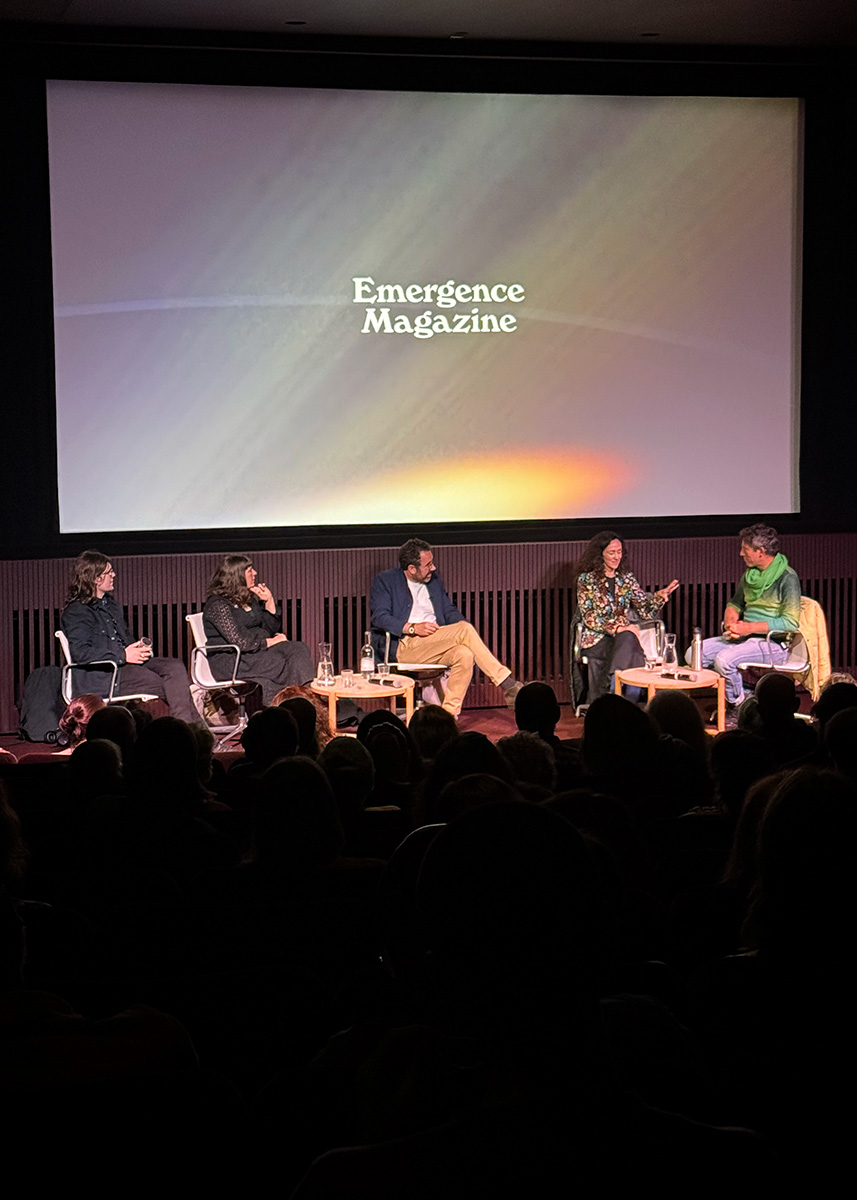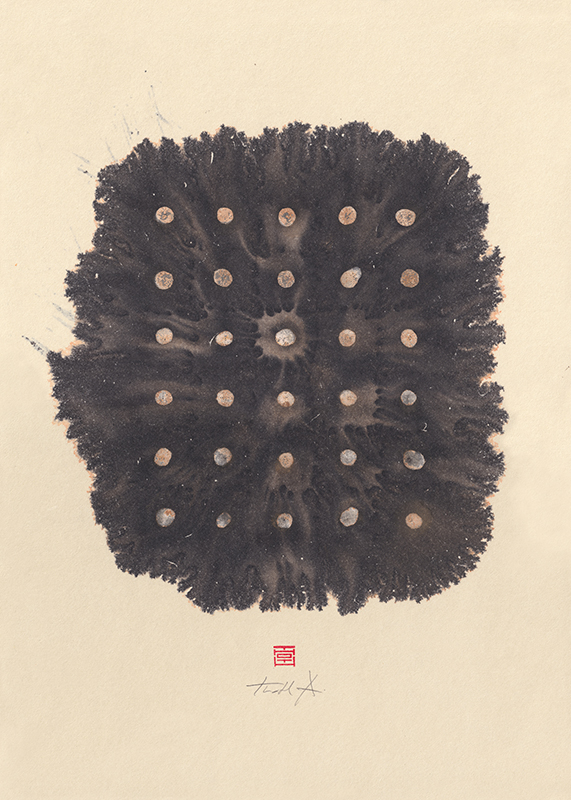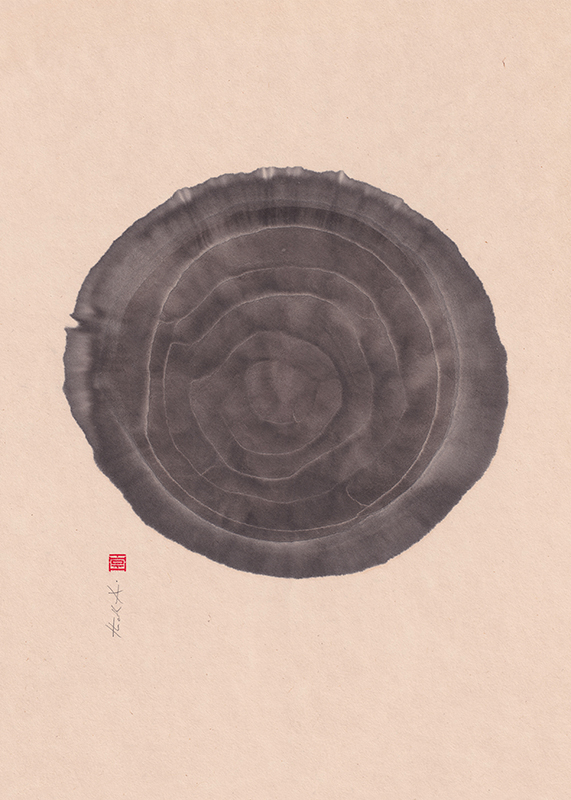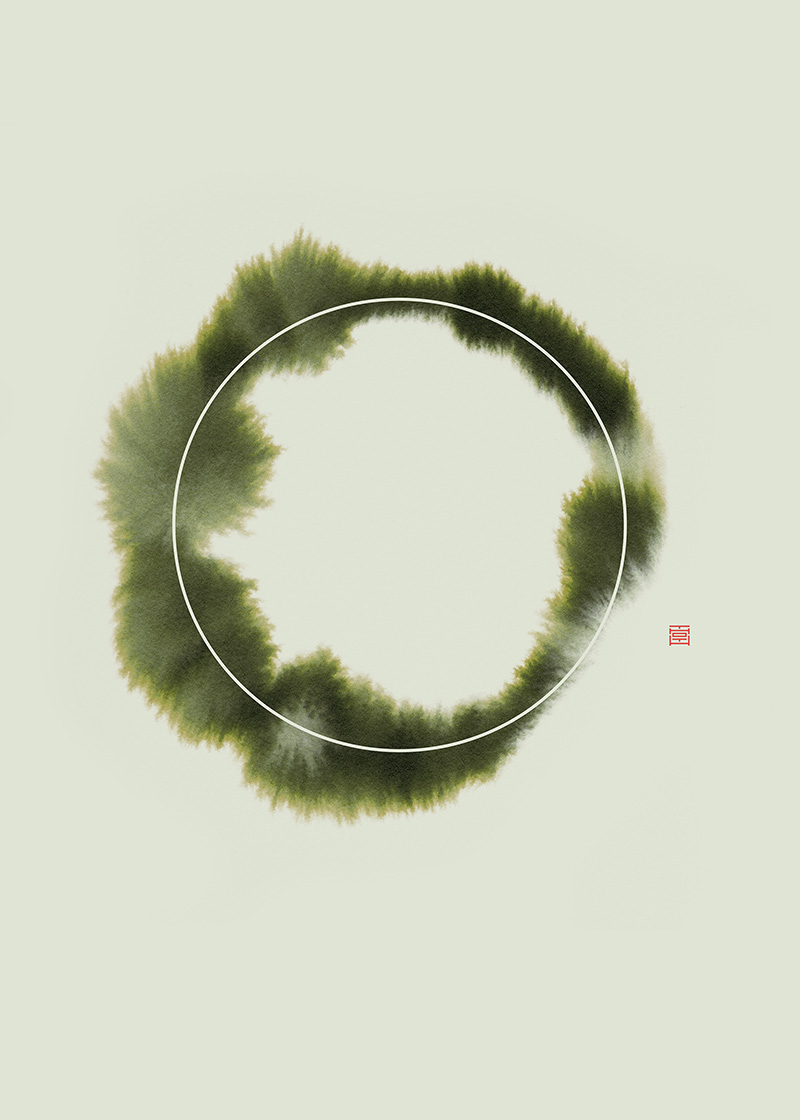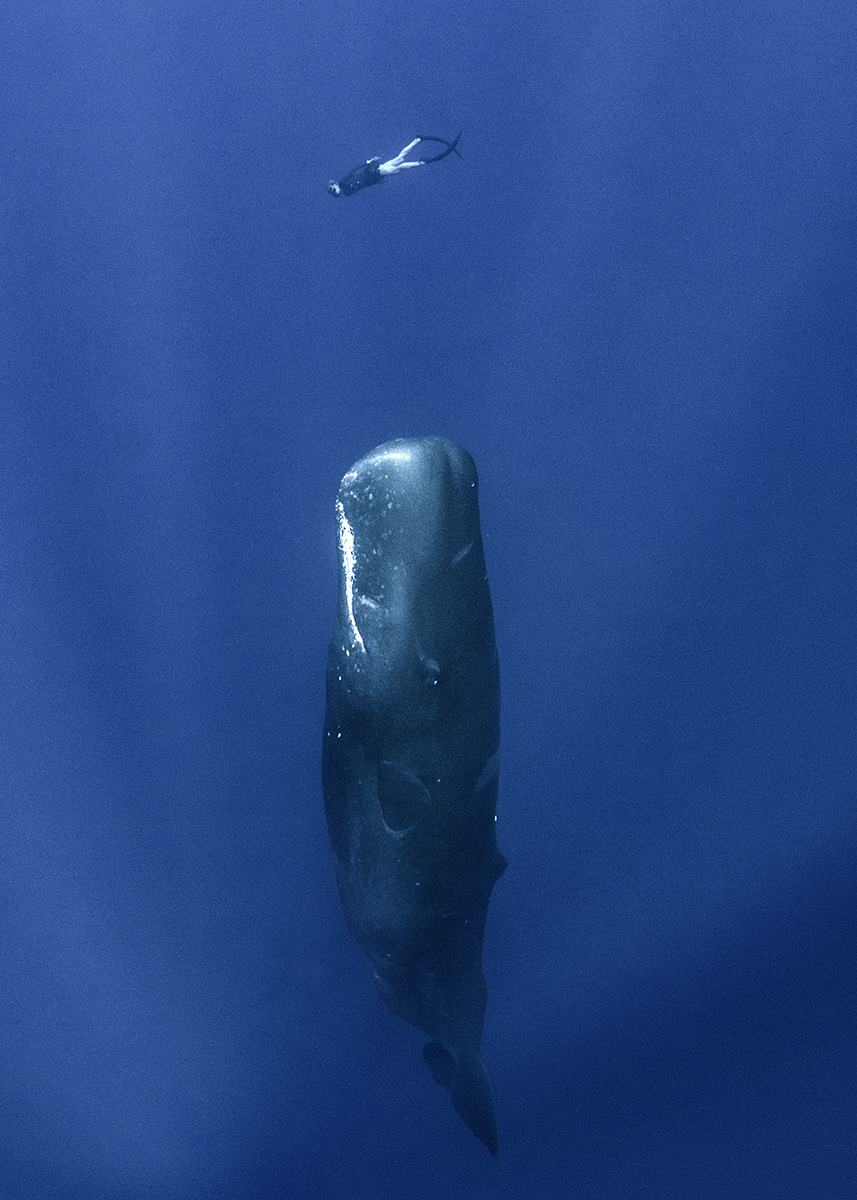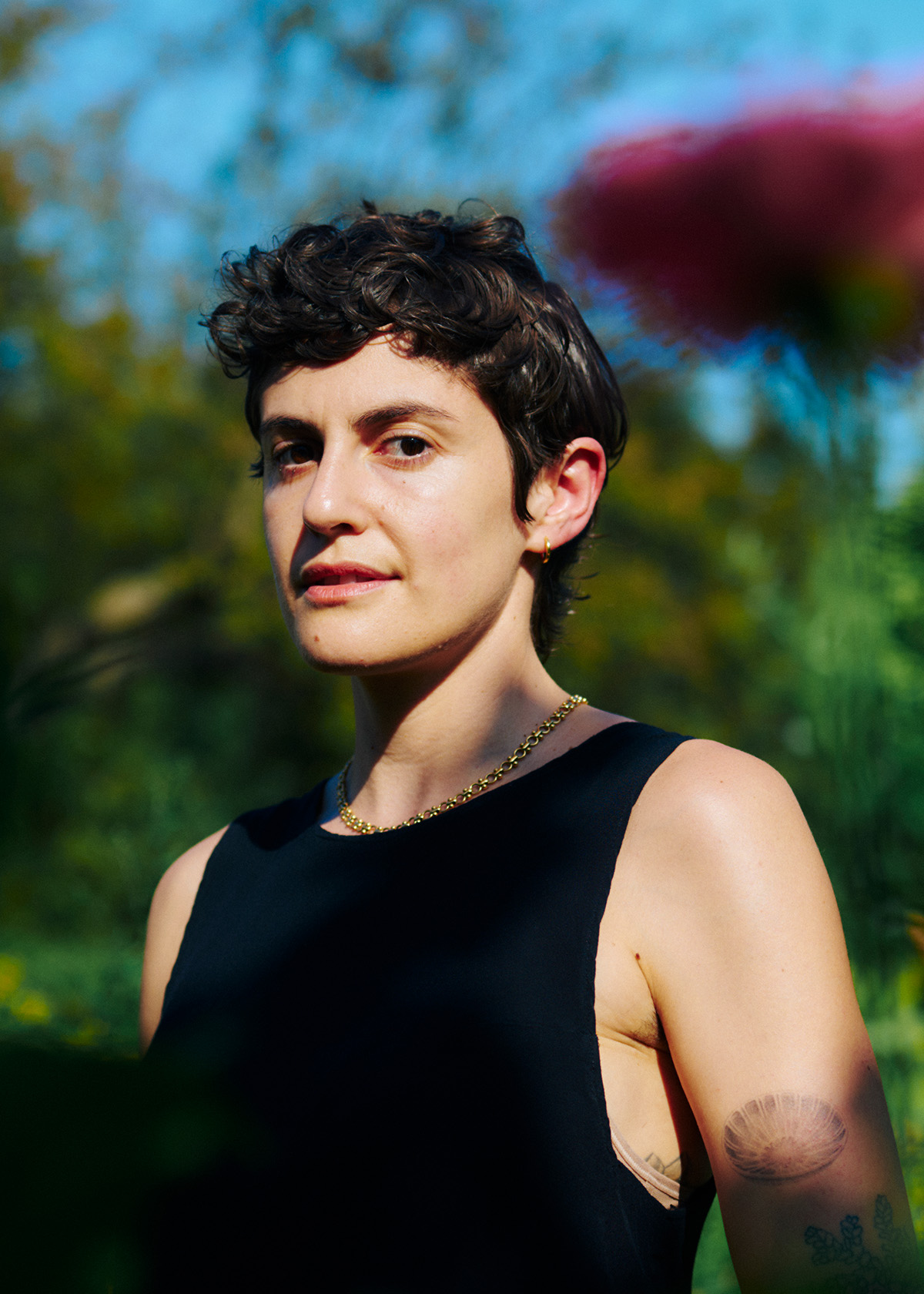
A Primordial Covenant of Relationship
Emmanuel Vaughan-Lee is an author, Emmy- and Peabody Award–nominated filmmaker, and a Sufi teacher. He has directed more than twenty documentary films, including Taste of the Land, The Last Ice Age, Aloha Āina, The Nightingale’s Song, Earthrise, Sanctuaries of Silence, and Elemental, among others. His films have been screened at New York Film Festival, Tribeca Film Festival, SXSW, and Hot Docs, exhibited at the Smithsonian Museum and London’s Barbican, and featured on PBS POV, National Geographic, The New Yorker, and The New York Times Op-Docs. His first book, Remembering Earth: A Spiritual Ecology, is forthcoming from Shambhala in summer 2026. He is the founder, podcast host, and executive editor of Emergence Magazine.
In this talk given at St. Ethelburga’s Centre for Reconciliation and Peace in London, Emmanuel Vaughan-Lee speaks about what it looks like to live in an unfolding apocalyptic reality and the creative possibilities that are waiting to be embodied. In this time of deep uncertainty, he reminds us of the ancient, primordial covenant of relationship with the living world that can give us a ground to stand on, and the sacred nature of creation that is always there, waiting for us to return to it.
Transcript
The theme of this evening’s talk is about this time we are in, living with the unknown. That is the theme of the latest print edition that Emergence has released. It grew out of the early days of the pandemic—which for many of us are not that far away—but we seem to be trying to forget them and move away from them, to pretend they never happened. But in those early days of the pandemic, it became apparent that what had been an experience of living with the unknown, of living in a time of apocalypse for many people all around the world, had become something that we were all experiencing together in a completely different way. But it is important to recognize that people around the world for centuries have been living in a space of the unknown, have been living in a time of apocalypse, where colonization and imperialism and capitalism and greed and genocide have been wreaking violence in untold ways on untold peoples. But often it has been far away from our own doorstep—at the edge of the world or in a place far away, somewhere where we didn’t have to look at it very directly and could turn the other way. And that’s what we’ve been doing for a very long time: turning the other way.
But this experience that the pandemic offered us was really the first time we experienced something globally together in this way, where the rug was taken from under our very feet and we did not know what was going to happen tomorrow or next week or next year. Everything shifted in a short amount of time. And it wasn’t just the pandemic itself, it was also what the pandemic revealed, the cracks that it laid bare.
And I sat in my home, like you sat in your home under lockdown, and I watched as these cracks became chasms and the fragility of our society—and the falsity of our society—was laid bare. And the pandemic, which left hundreds of thousands of people dead in my country—and many, many people here as well—was just one part of the story: in America, the killing of George Floyd unleashed a wave that was felt around the world, as people stood up to centuries of racial oppression and said, “No more!”
And a forest fire burned outside my doorstep. For years we had fires in California, where I live, and each fall we knew we had to wear masks (N95 masks)—because the forest would burn so much you couldn’t see the sun. And what fell on your doorstep wasn’t just ashes, but the death of other beings, trees and creatures that existed in those forests. But this time was different, because the fire that burned was at my doorstep. I live right by a national park on the edge of the sea, and a crazy wild lightning storm unlike any seen before unleashed fires all over California, including right outside my house. The fires raged for two and a half months before they were able to put them out.
Each day there was news of hundreds of thousands of people around the world dying, and hundreds of thousands of people rising up—despite the fear of gathering in groups—standing up and saying, “No more!” to racial oppression, to colonization, to an imperialistic society gone mad. And the forest burned. And the forest burned. And so out of this experience—partly my own and partly a shared experience—came this idea: can we find a way to tell stories at this time that can help orient us and help guide us in this space of the unknown we have found ourselves in? We gathered four themes to explore this, themes that really tell an archetypal story, an ancient story that is both deeply personal and collective—a story of initiation, a story of ashes, a story of roots, and of futures.
What we experienced truly was an initiation—a global initiation—where much was laid bare. Where much was laid bare. And in times when one goes through an initiation, whether it is a personal initiation or a collective initiation, there is the possibility for real transformation, there is the possibility for much to fall away—you know this. Things can shift; you can let go of things that you were attached to. And so initiation leads to burning, but not a bad burning necessarily. A burning that lets go of what does not matter, of what is not essential. And you walk in a field of ashes, just like I was looking at ashes around me. But from this space where much is burned away, there is always the opportunity to return to something that is real—to get to the root of something. From initiation, one burns away what is not real to reveal what is real, to reveal the roots of what matters. And we all experienced that during the pandemic: The revelation of what matters—kindness, compassion, care for our fellow human beings. The realization of what shared breath really means. And from this space of what might be real, what is real, a new future, possible futures, can emerge. Leaving behind what isn’t real, you return to what is real, and from that place something can emerge.
And this was the framework that we worked with for this issue, finding stories that explored this, finding stories that evoked the questions that were emerging out of that time. Gathering artists, gathering writers, gathering poets, each seeking out in their own way—just as each of you was seeking out in your own way—how to make sense of what was happening; how to make sense, how to understand, how to be with what was happening. And it’s always interesting when you gather storytellers together. A gathering of stories tells a different kind of narrative than just a single story. You start to see different patterns emerging, different voices emerging, different ways of being and seeing emerging when you gather stories together. One of the great privileges I feel bringing people and stories together, is you get to reveal patterns that emerge when storytellers and stories come together. Just like when human beings come together in a room and there is a different pattern, a different possibility—because we each bring our own story with us when we come. And out of these stories that we gathered there were some questions that rose to the surface, and it was these questions that I want to talk about this evening.
The first question: How do we find our ground in a groundless reality when anything can shift at a moment’s notice? How do we find our ground in a groundless reality when anything can shift at a moment’s notice? What are the pathways of healing that can be walked at this time? What are the pathways of healing that can be walked at this time? And how do we bear witness to the loss that is unfolding around us, and the grief that comes from that loss, without getting consumed by that loss, so that we are no longer able to participate and be present with what is unfolding around us? These were the questions that rose from the stories we gathered.
But I don’t just want to respond to these questions from the place of living with the unknown, but rather from the larger story that living with the unknown emerged from—which is the story of our time, the central crisis of our time, which is this great story of forgetfulness. For centuries and centuries it has gripped our world. My friend Joanna Macy calls it “The Great Unraveling,” where everything that was built on something that is not real will fall away like a house of cards. It will collapse—this great story of forgetfulness, forgetfulness of the sacred nature of creation. Forgetfulness of the sacred nature of creation. This crisis of separation, where the human and the nonhuman were separated, forcefully at times, and the sacred was forgotten.
This is the story of our time, this story of forgetfulness, this story of unraveling. Because the heart of the climate crisis is not a crisis of emissions—it’s not even a crisis of capitalism and greed. Those are all expressions of what happens when we lose the most essential nature of a connection, a relationship that has existed since time immemorial—the sacred connection between us, as human beings, and the living Earth. And while this is a story of forgetfulness, a story of unraveling, it is also a story of remembrance, as Joanna says, the great turning. As we turn away from forgetfulness and turn towards remembrance of the sacred nature of creation—through the pains of realizing our own forgetfulness and what comes from that forgetfulness—we are turned again back to what it means to be a human being in the most essential part of our beings, to a space of connection and kinship and reciprocity and relationship with the living Earth and all the beings it contains. This is the central story of our time. And living with the unknown is but a chapter in this story.
So how do we find our ground in a groundless reality when anything can shift at a moment’s notice? It means that first that we have to recognize that the ground we walked upon was not real. It was not lasting. It was built on quicksand and lies and false everything— a landscape that was not real. It was not grounded in what is real because it was not grounded in that ancient relationship between the human and the living Earth and the recognition of the sacred. It was not grounded in the recognition of the sacred.
So we first have to recognize that we are walking in something that is not real and then turn to something that is real. To recognize that we have ignored the sacred creation of nature, and then turn towards it, with respect and, ultimately, with love. Because this is a story of love as much as it is a story of forgetfulness and remembrance. It is also a story of love. Because at the heart of that ancient primordial relationship that existed, there was love. Not the Hallmark variety of love, not even the human variety of love, but a much vaster, more ancient, and simpler form of love. A covenant of love between the human and the living Earth. And all of our ancient cultures since time immemorial understood this, and they built the foundations of their cultures and their civilizations and their societies on this ancient understanding and covenant of love. Their dances, their ceremonies, their songs, their prayers, were all in service to that love. Everything was an expression of remembrance of that love, because that love was a binding agent. That love drew the worlds together. That love created respect, created awe, created fear. Not the bad kind of fear—a fear of the storm, a fear of the tidal wave—but a fear of the majesty of the living world. A respect for what we did not understand of the mystery. A respect for the mystery. A respect for the unknown. And that is where we are finding ourselves again.
We are in the time of the unknown, and we have to learn to respect what it means to be in the time of the unknown, which means we have to return to something that is real that can hold us in the time of the unknown. And one can say, yes, the sacred nature of creation can hold us, but in truth that is a concept. Love for the sacred nature of creation, when it is felt and when it is experienced, is not a concept. It is something real that you feel in the heart, in the gut, in the body. And it’s more real than the pavement on the sidewalks outside this building. It has real substance. It has real depth. It has history and history and history and layers of relationship woven into it. We have forgotten this, but it does not mean that we can’t remember it. Because we are not trying to create something new. We are not trying to create a sacred relationship with the Earth.
We are trying to return to something that already exists. Even if it is dormant deep, deep, deep inside of us, it still exists. It’s there in the bones, in the DNA, in the marrow. It lies there waiting, waiting, waiting. It lies there waiting, waiting, waiting to be woken up. To be remembered. It is so forgiving. For thousands of years it has been forgotten, and it’s still there, waiting, waiting, waiting to be remembered. Because it’s part of us. It’s part of the fabric of who we are as human beings, because we spent a great deal of time in our evolution, in our history, in relationship—in right relationship—with the living Earth. Our history is much deeper than we think it is. We think it is this. It is so much greater. We forget.
And an initiation—like this initiation that we’ve just gone through, this shared global initiation, which is about much more than the pandemic—can wake us up, has woken us up, is imploring us to wake up even further. Because this initiation is about more than a virus. It is about more than a virus. It is about this larger story that the virus tried to show us—this story of connection, of how closely we are connected, and how closely we live, and how quickly our society, which we called all-great, can slip away, can fall away, can break away. It is so fragile.
It is a house of cards, built on a house of cards, built on a house of cards, with no floor. And we are being shown—we are being implored to return to what is real. And this experience—the power of this experience—can wake us up. Yes, through heartbreak, through suffering, through seeing people die, loved ones die, through seeing forests burn and beings die, seeing our future slip away, having no sense of what might be around the next corner—it can wake us up. The suffering, the realization—it can wake us up. And then the heart, which is such a powerful vehicle of transformation, is suddenly in play in a way that it wasn’t before. It suddenly has a seat at the table, and it starts to see things. It starts to feel things. It starts to remember. The heart starts to remember. We are thrown back upon ourselves—our deepest selves. And there is great power in that. We are thrown back upon ourselves. Our hearts can be opened. And from that, we can remember what it means to feel love. Because if we are going to find any way forward from this crisis—this crisis within a crisis, within a crisis, within a crisis—it’s going to have to be grounded in something that is real. And nothing is more real than love. Nothing is more real than love.
Any real response to a spiritual crisis—which is what we are experiencing and living and breathing right now—must have a spiritual response. It doesn’t mean that we don’t do our best to reduce the pollution and the emissions that we put out into the atmosphere. It doesn’t mean that we don’t do our best to simplify our lives, so that we are not consumers run rampant. It doesn’t mean that we don’t look for real-world solutions to the crisis we’re in, but those solutions are meaningless if they are not grounded in love for the Earth. They are meaningless because then the heart of the problem, the heart of the crisis, is ignored. And the lesson that we could learn is ignored. And the possibility of what we can contribute at this time is ignored.
We are being shown so clearly and so directly the need to return to a space of love and remembrance of the sacred nature of creation. And this suffering and this loss and this grief—it can open our hearts, and then we can begin to live and function in a very, very different way from a very, very different place. It also gives us ground to stand on. Gives us ground to stand on in a time when ground can be taken away at a moment’s notice. Because the grounding of love and the relationship of love that exists between the human and the living Earth does not play by human rules. We don’t control it in the way we think we might. It’s part of an ancient primordial covenant of relationship. It is much greater than any one of us. It can give us a ground to stand on. It can hold us and nourish us and sustain us because it is real.
But it doesn’t just do this without our own effort and our own engagement and our own individual—so individual—ways of recognizing, remembering and being in relationship with that love. It is just like any other relationship—it requires our attention. It requires our engagement. It requires hard work at times. But luckily there are many models of how one can do this, because it is not new. Nothing that we are going to do, or are being asked to do, is new. It is in a different time, in a different place, in a different way, but it is not new. All of those prayers, all of those ceremonies, all of those dances, all of those songs, all of those poems, they all held within them a technology far greater than the technology that is on display in the buildings to the left and the right of this old church. Because they were technologies of remembrance, technologies of love, woven between the human and the living Earth.
With each breath, with each step of the dance, with each syllable of the song, that thread of love and remembrance was woven. That thread of love and remembrance was woven. And while the times are different, the place is different, we still can return to simple ways of being in relationship with the living Earth that exercise that technology. It can be as simple as holding a space of silence with the recognition of the sacred nature of a living Earth in your heart, in your consciousness, each morning before you step outside of your door. It can be that simple. It can be as simple as walking: acknowledging with each step that you are walking in relationship with the living Earth. It could be as simple as breathing: recognizing as you breathe in and out and in and out that you are not breathing in isolation, that you are breathing in relationship, and honoring that relationship with the intention of each breath.
We’ve been doing this for a really long time. There are more practices of working with the breath from traditions all around the world than one can ever name—it is nothing new. We have been walking on this Earth for a very long time—it is nothing new. We used to know and understand the significance of simple acts of being. Yes, one had ceremonies and harvest festivals and special prayers—and those were important, those are important. But between those days of celebration, between those special prayers, was always the constant remembrance of the sacred nature of creation. It was woven into the fabric of everyday life. It was woven into the fabric of every culture’s values. It was so basic. It did not need to be explained in the way that we have to have everything explained now.
Now, we have terms like “spiritual ecology,” “sacred ecology.” We have to name things so that we can try to remember what it was like. And while that is helpful, what is more helpful is recognizing that deep inside of us, deep in our DNA, deep in our bones, there is a cry of remembrance waiting to be heard. Waiting to be heard, waiting to be lived. And when we live this in simple ways—and it really has to be simple, we cannot turn to cultures from the past and appropriate their ceremonies and take their prayers and take their magic and try to understand it or live it. No, we’ve done too much of that already. But we can return to simple things, because simple things, when done properly, can build something that lasts. We can learn to walk again in right relationship. We can learn to breathe again in right relationship. We can learn to eat again in right relationship. Simple, simple things.
And when we have learned to integrate this remembrance of the sacred nature of creation back into our lives through simple ways of being, simple ways that every person in this room can do—You don’t need a degree, you don’t need a weekend course and a retreat. You just need your attention, your openness, and, most importantly, your love. Most importantly your love. And when you have done this, not only do you see the world differently, not only do you feel the world differently, but you hear the world differently. Because the other side of this story of remembrance, the other side of this story of forgetfulness, is this journey of listening that we are being asked to take. Because how can we ever really listen to something if we are not grounded in something real? It is the key that unlocks the door to seeing what is there, to hearing what is there. How can we listen to the languages of the Earth if we have cotton wool in our ears? We cannot. But this relationship that you return to, this primal, primal relationship—which already exists, that you unlock—is unlocked for you by the heartbreak, by the pain, by the suffering. It opens you up. And then you can begin to learn to listen again: to hear the winds not just as winds, but as voices; to recognize the call of a nightingale for what it is; the cry of the hawk, the feel of rain on your cheek—they are not just a background to our lives. We are the background to their lives.
And that other story of listening is such an important one, because whatever unfolds in the future, it has to be done from a space of listening. It has to be done from a space of listening just as much as it needs to be done from a space of remembrance and love. It must be from a space of listening—a space of listening that is grounded in remembrance, grounded in love, so that what emerges from the ashes of the fires of this time is something based on what we hear rather than what we impose. We have imposed for far too long. But if we come from the space of right relationship and we are listening, then the stories we need to hear will reveal themselves to us. The stories we need to hear will reveal themselves to us. They will emerge from the ground like sprouts waiting to be watered, waiting to be seen, waiting to be heard, waiting to be engaged with. These are pathways to healing that can be walked. These are ways we can find ground in a groundless reality.
And there are also ways to hold the loss, to hold the grief. We have to bear witness to the loss, we have to hold that grief that is part of the story, that is part of what is unfolding. We cannot turn away from it. It demands our attention. But we are a container with a foundation, with a ground that is real. We have something to help us hold that loss, bear that loss without succumbing to it, so that we can be present both in forgetfulness and remembrance. Recognizing what happens when we live in a world of forgetfulness, and what is unraveling in a world of forgetfulness, and also being attentive to a world that is awakening—a world that can awaken if we are rooted in remembrance. Rooted, rooted, rooted in remembrance.
And what we’ve experienced these last few years is, as I think you all know, but a foretaste of what will come. The men in suits in Sharm el-Sheikh stand and argue. Can we keep our economies going and still get to 1.5°? The men in suits, they stand and they argue, and the world falls apart. Things have been set in motion, as any scientist will tell you, that cannot be undone. And while we don’t know the future—we don’t know how high the seas will rise and how much the forest will burn and how many creatures will sing no more—we know that things have been set in motion. And if we think we can control them, then our hubris knows no bounds. And so we must return to what is essential. We must live what is essential. We must bear witness to the loss and the change that will be even greater and even harder than we could ever possibly imagine; and also look to a future in which remembrance is a foundational way of being, in which love is a foundational way of being, in which the sacred is a foundational way of being, in all sorts of ways.
There is a poem and a prayer that’s in one of the essays in this edition that I’d like to share to end the talk. It’s very beautiful. It’s very simple. And while it speaks of beauty to me, it also speaks of remembrance. It’s an old Diné practice, poem, prayer:
In beauty I walk
With beauty before me I walk
With beauty behind me I walk
With beauty above me I walk
With beauty all around me I walk
With beauty within me I walk
In beauty it is finished.
